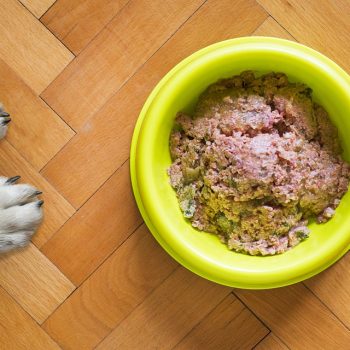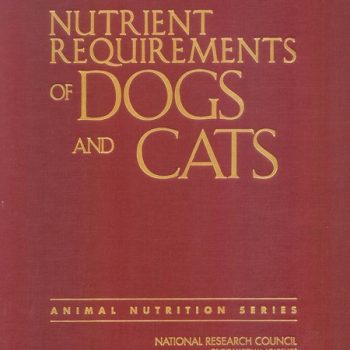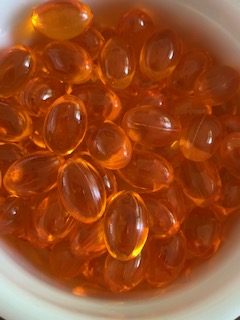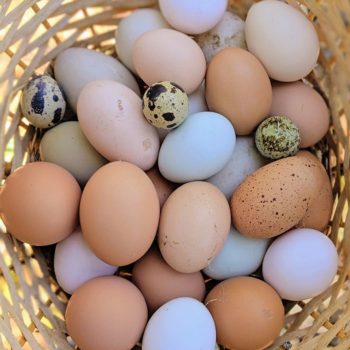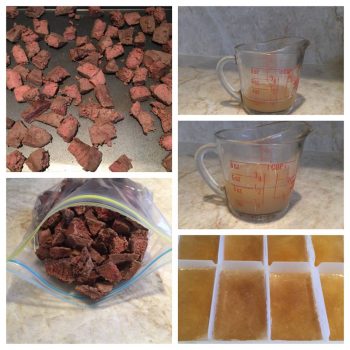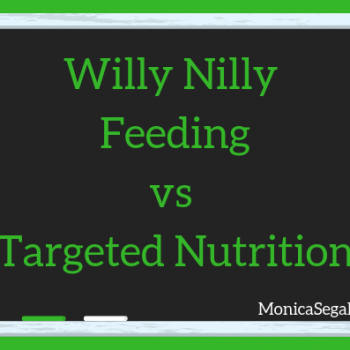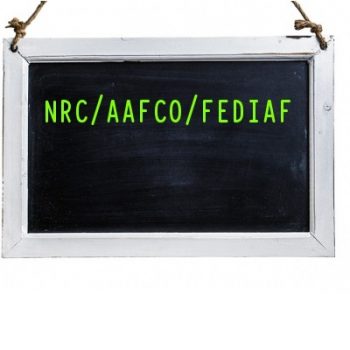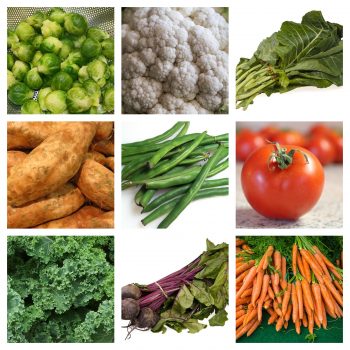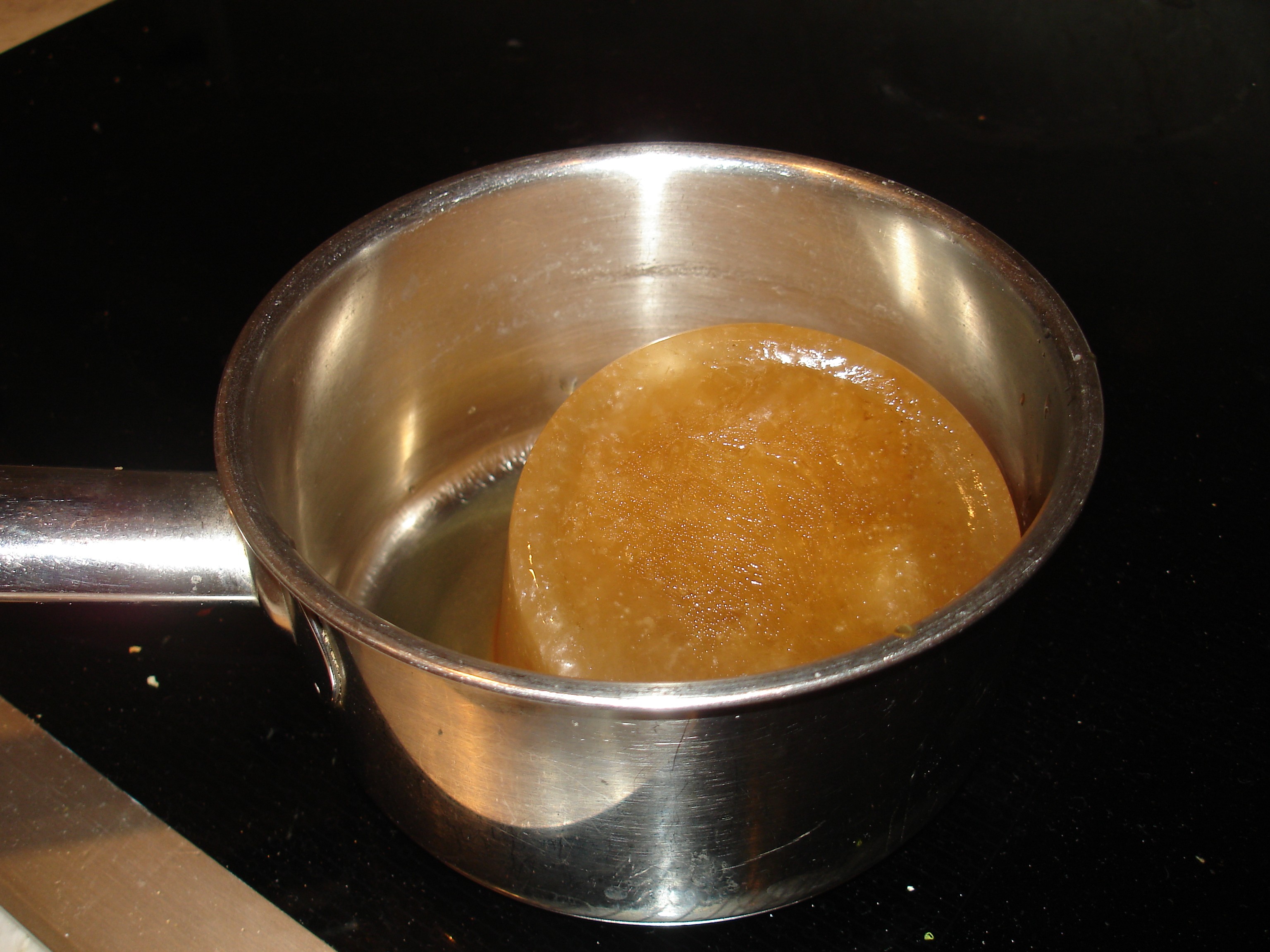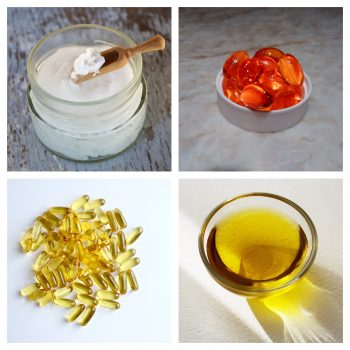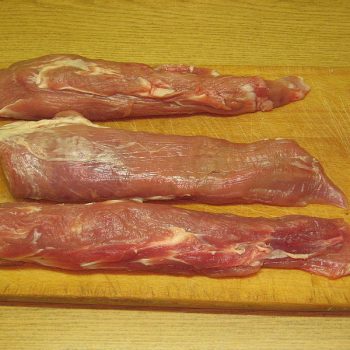Saturday, February 6th, 2021
A healthy gut equates to a healthier dog. Healthy + slim = improved quality of life and longevity.
Three key points the study makes:
- Dogs fed fresh food don’t need to consume as many calories as when fed kibble
- Human grade food is more digestible than commercial dog food
- Dogs on freshfood diets have healthier gut biomes
Read more Human Grade Ingredients in Pet Foods
Thursday, January 21st, 2021
Pet parents are faced with varying points of view when they consider what a balanced diet for dogs should look like. While the internet is undoubtedly a bonus most of the time, it is also rife with blogs, opinions on social media and ads that present some questionable ideas presented as facts. For example, the idea that the National Research Council (NRC) provided their guidelines based on arbitrary numbers. This is simply not factual.
The NRC committee is an ad hoc group (called upon as needed rather than being fully employed by the council) of independent scientists. While all of these scientists are distinguished, you’ll appreciate Quinton Rogers (Professor Emeritus Molecular Biosciences, UC Davis) as the person who wrote about the taurine requirement of the cat. How many pet cats were saved by that? This same level of knowledge and application is extended to the nutrient requirements of dogs when the ad hoc group puts their findings to paper, but that’s just part one! Read more Established Guidelines for Home-Prepared Diets
Monday, October 26th, 2020
What many of you may not know is that Monica and I are not only passionate about canine nutrition, but we also avidly pursue optimal health for ourselves. Nutrition is a passion that has really connected us to not only help dogs, but there’s always an underlying hope that seeing a dog thrive on fresh foods, may inspire the dog parent to include more healthy foods in their own diets!
Being passionate about human nutrition as well as canine, has turned me (Jody) into a bit of nutrition/wellness podcast junkie! Sadly, it’s pretty common for most functional health/nutrition podcasts to reiterate how unhealthy the majority of the human population is— Read more Personalized, Balanced Nutrition for Dogs
Thursday, September 24th, 2020
There isn’t a one size-fits-all-solution when dogs begin to refuse food and it depends on health status, but at least one (and hopefully more) of these things can help:
- Change the diet (be sure it’s balanced) Dogs can associate feeling nauseous with something they ate in the past that seemed to have caused the nausea, and if that something happens to be the usual diet, food aversion happens quickly.
- Change the feeding bowl. A flat plate can seem attractive to a dog who usually eats from a bowl. Some dogs refuse any type of feeding utensil, but will eat food off a placemat on the floor.
- Sometimes an area of a room or even an entire room becomes a “bad place”. Negative experiences like nausea and vomiting may be related to that location. Try another place in that same room, or feed the dog in different room.
Read more Tips for Dog Parents With Picky Eaters
Thursday, September 10th, 2020
This is a popular question when people make food for their dogs and when it’s asked on social media the opinions fly. Belief systems are sometimes presented as facts, so let’s simplify 😊
The two most recognized ‘fats’ are omega 6 and omega 3. Both are essential, meaning the body can’t manufacture them so they must come from dietary sources.
Trying to balance the omega 3 and 6 content based on prey animals or historical feeding may be interesting, but unrealistic. There is no way to go back in time and see what fatty acid composition a prey animal may have had, nor are we able to duplicate it today even if we wanted to. Most of us are feeding farmed animals, so even those with access to pasture are consuming a vastly different forage from years gone by. Soil composition affects crops which affects the animals eating them and finally, the animal (dog or human) that consumes it. Add a global economy to this and you can see the possible variables. Read more What Kind of Oil Should I Use in Dog Food?
Sunday, August 30th, 2020
We have a special focus on providing balanced dog food recipes for dog parents who are serious about feeding the best possible homemade diets be they raw, cooked or a combination of both. Dogs with health concerns are certainly a big part of our roster, but healthy dogs deserve the same attention to their diets.
As of this writing, a search for ‘dog food recipes’ brings 878 million (seriously!) results. Add ‘balanced’ to that search and the number goes down to 8 million. No doubt an impressive number, but what we find listed in those searches is telling.
The first and second searches contained duplicate recipes and these recipes lack vitamins and minerals – how is a dog parent to know whether these recipes are balanced and will positively support their dog’s physiology? Read more Balanced Dog Food Recipes
Thursday, August 20th, 2020
Quite simply – no.
Intolerances or allergies can present at any time and if you’ve been feeding every protein you’ve had access to, you are going to be in a very difficult position because elimination diets require a novel (new) protein.
Keep in mind there are various issues that may require a novel protein – in conjunction with veterinary care and diagnostics.
Read more Does Rotating Proteins Guarantee Your Dog Won’t Develop a Food Allergy?
Tuesday, August 11th, 2020
Although it’s not only small dogs that can be fussy eaters, it is more common in the toy breeds and there may be a few reasons.
Fresh food diets can work really well if we keep a few things in mind:
- Rule out any medical issues with a vet visit, bloodwork etc.
- Small dogs often get a lot of attention by receiving many treats. Little tummies fill up quickly and smart dogs will hold out for more treats rather than eating their own food. Use part of their food intake as treats by putting some in puzzle games.
Read more Help Your Picky Dog Eat Well
Monday, August 3rd, 2020
Eggs hold the number one spot on the biological value (how readily a digested protein can be used in protein synthesis in the cells of the organism) scale. Along with other nutrients, they’re a great source of choline which plays roles in fat transport and metabolism, muscle movement, memory, neurotransmission, DNA synthesis and cell structure and messaging.
With all three varieties of eggs more available these days the nutritional differences between them, including their costs may impact your decision about which to choose for your own dog.
Comparing one type of egg to another is best done by weight because duck eggs are larger than chicken eggs, and quail eggs are very much smaller. Read more Chicken, Quail and Duck Eggs For Home-Made Dog Food Recipes
Monday, December 9th, 2019
Our preference when formulating diets is to get as many of the required nutrients from foods but the reality is there are many situations where supplements may be needed.
▶️Some dogs simply can’t tolerate the actual foods that provide the needed vitamins or minerals. Salmon and sardines provide vitamin D and EPA/DHA but many dogs can’t tolerate fish, simply don’t like it or won’t eat it consistently.
▶️ Some dogs can’t eat enough food to get the needed nutrients or they’ll gain weight, others simply won’t eat enough food. Even with a personalized, nutrient dense diet, picky dogs and easy keepers are usually candidates for supplements. Read more Supplements Or Whole Foods?
Thursday, October 10th, 2019
One of the most common directives we see on social media is to add omega 3 fatty acids to the dog’s diet. Without a doubt omega 3s play important roles but adding them whether through fish and/or fish oils, krill or other marine oils and vegetarian options like chia seeds, flaxseed meal et al, putting all the focus on omega 3 addresses only part of the story. This is especially true when skin issues crop up. Here’s why.
Both omega 3 and omega 6 are essential fatty acids which means the body can’t produce them, so they need to come from food sources. Together they: Read more Can You Feed Too Much of a Healthy Fat?
Thursday, December 27th, 2018
Beef liver is sometimes included in the diets we formulate. Although it contains other nutrients, beef liver is a very rich source of copper, so not much has to be fed in order to meet a dog’s copper requirement.
Here’s an easy way to have the right amount of beef liver ready at all times. Use it as a treat, or mix in food. The broth can be used as an addition to food, or for a warm, liquid snack.
Read more Beef Liver & Broth
Wednesday, December 5th, 2018
If you are new to feeding your dog fresh foods you’ve probably tried to research by going online and joining a FB group (well, it’s rarely one 😊) for advice. You were most likely told to follow some guidelines based on a % – such as 80/10/5/5 or 80/10/10 or 50% raw meaty bones plus some other % for organs, muscle meats and maybe some veggies. There are many thoughts on what the ratios should be and it’s very confusing.
It’s confusing because the suggestions are based on opinion without much information for substantiation. Most feeding methods are based on percentages that try to approximate the composition of a prey animal. People figure out how much bone is in the prey animal and how much that contributes to the bone % of their chosen feeding method. Then they have to figure out how much of the organs of an animal contribute to the overall organ %- but often get confused on classifying secreting glands, muscle meat and organs %. And then what about veggies, seeds and oil balancing???
Read more Feeding by Percentage vs Targeted Nutrition
Friday, June 22nd, 2018
The National Research Council (NRC) guidelines were written by an independent group of scientists and are based on fresh food ingredients, not processed pet feed. Whole prey meets the NRC numbers, so for the ‘new’ thinking as regards prey model diets, if you believe they’re best, you should also believe that NRC is as good.
Dogs haven’t changed and their requirements are the same – so just because belief systems on how to feed have changed it doesn’t mean that requirements have changed. If not for science we wouldn’t know how to formulate therapeutic diets. If we don’t know that a 25lb dog needs X amount of phosphorus, and then that dog develops kidney disease and needs a low phosphorus diet to address it- how would we help that dog if the NRC numbers are meaningless? If the NRC is wrong, or outdated – why do the diets work so well even for correcting problems? Read more Nutrient Requirements of Raw Fed Dogs
Sunday, August 16th, 2015
Many dog owners in my world are concerned about every warning they receive via newsletters, articles, blogs, and not concerned about some things I think they ought to be. For instance there’s a naturally occurring substance called oxalate which is found in many foods. In combination with a genetic predisposition, excretion of calcium through urine, and some other issues, this can cause calcium oxalate bladder stones – but, it’s not likely unless you have a breed known for these stones. Foods that are high in oxalate also happen to be high in remarkable anti-oxidants and phytochemicals.
Read more Are You Avoiding Healthy Foods For Your Dog?
Sunday, January 4th, 2015
Bone broth has become popular for dogs and people. It’s been touted as being nutritious, and having healing properties for the gut (don’t try it on dogs with GI diseases that demand a low-fat diet) at minimum. There may be a glitch though. In a study The risk of contamination in bone broth diets the researchers wanted to know if the bones of chickens sequestered lead “A small, blinded, controlled study of lead concentrations in three different types of organic chicken broth showed that such broths do indeed contain several times the lead concentration of the water with which the broth is made.
Read more Lead Toxicity of Bone Broth – Should You Worry?
Tuesday, November 4th, 2014
Everyone has an opinion about which oil is best to add to a dog’s diet, and some people say to add none.
Sometimes all the noise and excitement about a product seems to ignore the facts, so here are a few that can help you make sense of whether to add an oil, which one might be best, and in what situation.
1. Coconut Oil
I had to start with this one because it’s been touted to do just about everything under the sun, and that’s just not factual. Don’t get me wrong. I think there are some really great uses for the stuff, and I add it Tori’s diet (and use some on her skin). I just don’t like the bogus claims attached to it.
Read more Oils For Dogs Deciphered (Which one to use and when to use it)
Tuesday, August 12th, 2014
There are times when medications can’t be avoided. In fact, sometimes they must be for life, and it’s these situations that tend to bring the toughest side effects to deal with. But! – dietary manipulation can go a long way to helping the body cope better, and even reduce the risks. Let me use our dog, Tori, as an example. I have a love-hate relationship with Prednisone because it’s saved her life, but it certainly has side effects.
Tori started showing odd signs when she was about ten weeks old. I’d call her, and she’d turn her head in the opposite direction. She could hear well in that no sound escaped her, but her response was strange. Read more Adjust Diets For Dogs On Medications
Wednesday, July 23rd, 2014
Eggs, milk products, fish, and meat (in this order) have the highest biological values, so it goes without saying that your dog would do well to eat these. What about the other foods, though?
Fruits and veggies that offer high amounts of phytonutrients (also called phytochemicals) can benefit in many ways from working to reduce inflammation to providing antioxidants that help fight cancer. All fruits and veggies provide some of these good things, but some are more powerful than others. Read more Mega-Nutrition To Share With Your Dog
Monday, April 21st, 2014
The skinny dogs…the ones with spines that poke out, appetites that are poor for no health reason per se. They’re stressed out, scared, guarded, and many just got out of shelters. That’s what I’ve been working with lately, and it’s been rewarding because the dogs have done really well. There are three important things to keep in mind as you read this.
The first is that the recipes are for healthy dogs. If the dog has any kind of disease that contraindicates a high-fat diet, you’ll do far more harm than good. The second is that feeding four small meals per day is much better than two large ones. The dog can only eat so much at one time, and in fact may not be eager to eat in the first place. So, a lot of food at one meal is likely to be met with resistance, but even if eaten eagerly, risks an upset stomach and diarrhea. Read more Weight Gain Recipes for Dogs
Tuesday, May 28th, 2013
Is there a difference? There aren’t farms that grow chickens to be consumed by people and other farms growing chickens to be eaten by dogs and cats. There aren’t oceans full of fish for people and other oceans designated for those that dogs and cats will consume. Food is food.
Animal feed is a different story. The following are a few of many examples of materials that fall under the definition of animal feed: meat and bone, fish meal, hydrolyzed feather meal, soybean hulls, fat and grease ( animal, vegetable, blends, restaurant grease/”yellow grease”) vitamin supplements, flavors, extracts, rumen by-pass, probiotics…and a whole lot more. Some sound like food. Meat and bone, for instance. Some, like vitamin supplements, sound ok. Most people have a harder time with the other things listed. Read more Human Food vs. Animal Feed
Thursday, September 27th, 2012
A myth, but one that circulates often. Some veterinarians give this directive as well. So, when did it become such a no-no to feed pork?
A very long time ago, and for valid reason (let’s just say it’s a myth with sort-of factual origins). Bacon drippings, bacon itself, fatty ham…all of these can be problematic for many dogs. And that’s what some people were feeding when their dog developed pancreatitis, colitis, etc. It’s not about the meat. It’s about the fat content. So, it seems that people made assumptions i.e. dog became sick when eating ham/bacon/fatty parts (pick one) = pork should never be fed to dogs; pork is hard to digest, and other such notions. Read more Can You Feed Pork To a Dog?
Tuesday, February 14th, 2012
People with belief systems about what the healthiest diet might be can point to many facts when they debate what to feed their dogs. The only problem is that our memories are shorter than we think. For instance, some people who’ve chosen to live a vegan or vegetarian lifestyle themselves will point to Bramble who lived to be 27 years old as an example. What did Bramble eat? According to some reports. it was rice, lentils and vegetables (maybe some supplements, but I haven’t seen mention of that), and according to others, eggs were part of the diet. Either way, we can say that if the owner was factual in her reporting, Bramble lived most of her life as a vegetarian, or vegan. She was a rescue, and nobody seems to have come forward to say what she ate prior to finding her forever home. While 27 is an incredible age for dog, Bramble is not the longest lived dog in the world. That honor goes to Bluey, an Australian Cattle Dog who lived to be 29 years 5 months old. So, what did Bluey eat? Read more Diets of The Oldest Dogs in The World
Tuesday, February 7th, 2012
Here are some of the most common questions I received last week:
Q: What is elemental calcium?
A: Every calcium source (egg shells, calcium citrate, etc) includes a percentage of pure calcium (the stuff that’s going to be absorbed). “Elemental” refers to the amount of real calcium – the amount that counts.
Q: Different sites give different amounts of calcium per egg shell. What’s the truth?
A: I’ve sent egg shells to a lab for analysis and checked with universities teaching poultry studies, and the bottom line is that it depends on the egg shell we’re talking about. The theory is that 1 large egg shell provides 2,000 mg of elemental (there’s that word again) calcium, but the truth is that it can vary. Read more Home-Made Diets For Dogs Q and A

